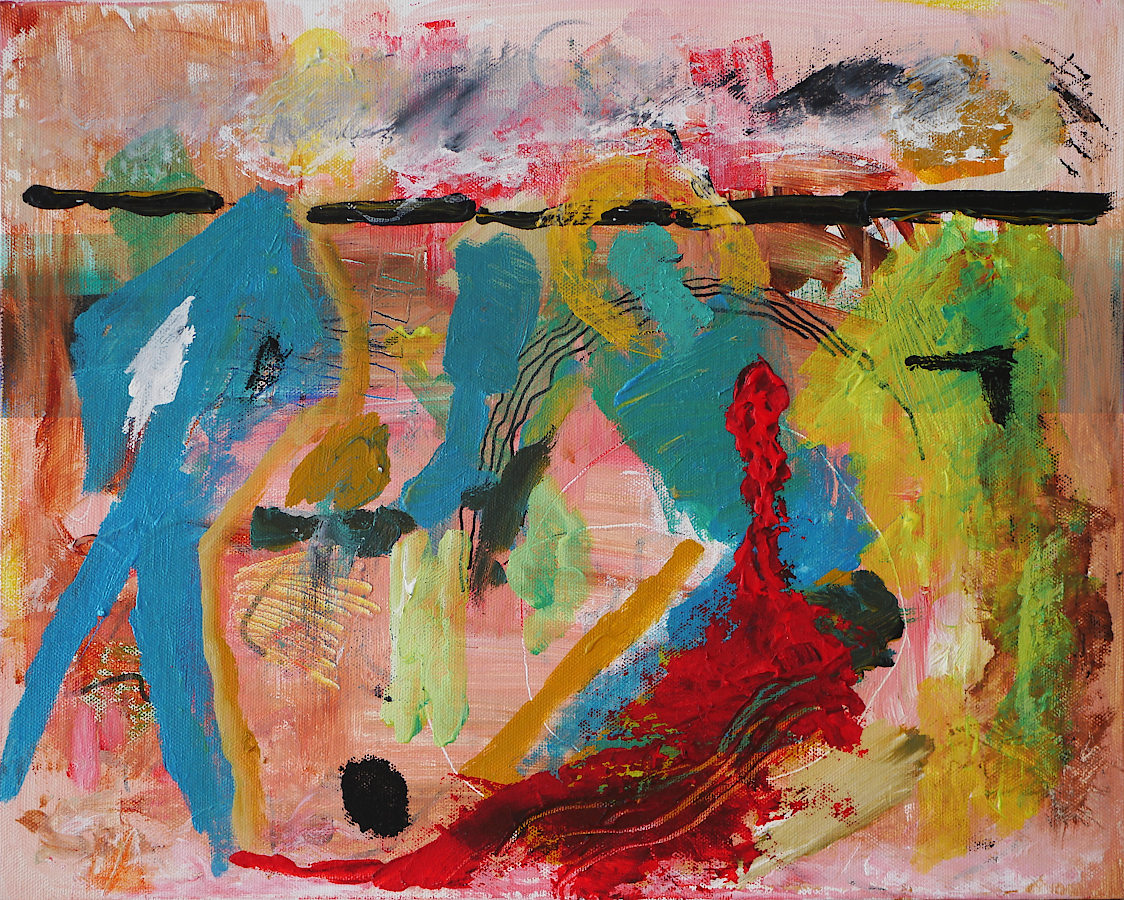
Artwork Description:
“For Arndt Pekurinen”
Mixed media on canvas board
Artist: Kia Karlberg
Arndt Pekurinen
Died by execution, 36 years old, on 5 November 1941.
This iconic painting portrays the coldblooded killing of the Finnish pacifist Arndt Pekurinen, born in 1905. Arndt was a peace-loving, religious, kind and patient family father who non-violently protested against the Finnish state’s demands to take up arms.
Pekurinen was, repeatedly, and for years, thrown in prison for refusing to wear a uniform and take up arms. In the courts, he suggested that he could do civilian service for a much longer time, to compensate, provided that he wouldn’t have to do the military service. Every time he appealed his case to a higher court, his sentences got extended.
The case of Pekurinen garnered surprisingly widespread international attention, to the point that even Albert Einstein wrote to the Finnish defence minister in 1930. The minister replied to him with lies and misinformation about the case (for instance, that Pekurinen would have refused to do civil service), which led to Pekurinen writing to Einstein personally with the correct information. Einstein got very angry and, together with 60 British MP:s and other dignitaries, wrote a petition for Pekurinen.
The Finnish government was probably ashamed for being caught lying and wanted to put the blame on Pekurinen and punish him even more than before. To save face and to pretend to mend Pekurinen’s situation the Finnish government made a new law for the option of civil service. Pekurinen subsequently got released in 1931. The law was applicable only in peacetime.
It’s likely that the government thought that Pekurinen ‘was responsible for the reputational blow that the country had received’, and that, behind the closed doors of power, it was then decided that he was to be killed at first opportunity. This closely resembles the thinking of a narcissist, who hypersensitively reacts to any criticism by becoming insulted, and then obsessively retaliates with punishment of excessive and unreasonable force.
During a few years, Arndt lived a happy life, getting married and becoming the father of two small children, a girl and a boy. The dark clouds of Arndts future were, however, gathering in the horizon, as the war broke out. To paint the picture further, the highest command in the country had not forgotten their ideas of retaliation, waiting eagerly for an opportunity to get back at Pekurinen. Nobody dared to touch him in peacetime since there were international eyes on the government in this case and the only way to take out revenge on him would be in a sneaky, cowardly way.
The war started. True to his principles, Pekurinen refused to bear arms. It should come as no surprise that he was thrown in prison although he again stated his willingness to do civil service. Was it here that the government suddenly could see a possible route for the retaliation? In the turmoil of war, a killing could be more easily hidden and forgotten?
Pekurinen was held in prison for nearly two years. Then, out of nowhere, he was sent to the war front. Why?
Sending him there made no sense (at least to any impartial observer) since he had no military training. Everybody knew that he would be of no use at the front (on the contrary, more in the way) since he would stick to his principles and never touch a gun. Fully aware of that he’d refuse, the government would get their chance at a poorly disguised revenge.
Pekurinen knew that they would kill him. On the way to the front he said: “In vain are you bringing me to the wilderness to be killed. You could have killed me in Helsinki.”

“In vain are you bringing me to the wilderness to be killed. You could have killed me in Helsinki.”

Things went as the government had viciously planned. Pekurinen, dedicated to non-violence, once again refused the orders to take up arms.
Pekurinen was ordered to be shot without trial. The first two soldiers refused, but the third carried out the order. Pekurinen was dead. Executed, without trial.
Pekurinen’s body was left in the forest.
The government lied to his wife, saying that he had fallen in battle. This is a schoolbook example of how evil narcissists work. They didn’t only take his life and destroy his wife’s and his children’s lives, but the government also tried to twist the truth and dishonour him so that his wife would think he had betrayed his conviction.
When his wife finally managed to have Pekurinen’s body transferred it was revealed that the body had been mutilated by the government and his ear was struck into his head with the end of a rifle.
The government thought that executing him would be too gentle so they probably molested him before shooting him, to make him suffer. What a barbaric, inhuman and uncivilised behaviour!
The officer who ordered the killing was later rewarded with the highest military honour, the Mannerheim Cross with a swastika.
Could this be an indication of that the order came from the highest command in the first place? There was no proper investigation of the murder and nobody was ever punished for the execution.
Additionally, Pekurinen’s case was kept secret for over fifty years.
All of these factors could be indirect proof of that the whole charade was an evil, disgusting and cruel act from the very top of the commands, showing the beastly nature of the leaders, acting out a powerful, tyrannic nation’s revenge on a small, sweet, kind individual who didn’t harm anyone.
Not only was the bloody act itself proof of brutal and sick malevolence but the very hiding, silencing and secrecy of it all makes it even more devilish.
To return to the analogy of the narcissist; a narcissist never learns and never changes but does everything over and over again. Nothing has changed.
Demand full restitution for Arndt Pekurinen!
Long live your memory.
Peace.
